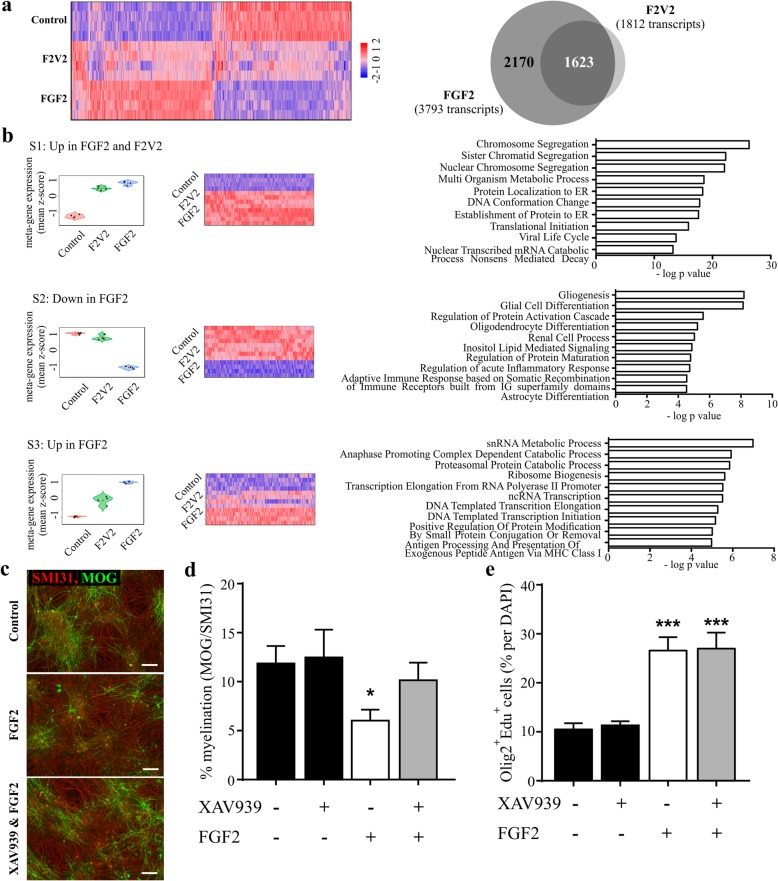Fig. 3.
Transcriptional profiling identifies a fingerprint associated with FGF2-mediated inhibition of myelination, which is dependent on Wnt signaling. Myelinating rat CNS cultures were treated with 100 ng/ml FGF2 or F2 V2 for 24 h at DIV18 and gene expression was analyzed by performing an Affymetrix rat gene array. a Hierarchical cluster analysis of the 9637 transcripts with FDR-adjusted p < 0.05 for any of the treatments (FGF2 or F2 V2) was performed. Shown are expression values for the four technical replicates in each group; gene expression level is represented by colour intensity (high expression in red, low expression in blue). Expression values were scaled using Z-score. 3793 or 1812 transcripts were differentially regulated by FGF2 or F2 V2 (fold change > + 1.4; FDR-adjusted p < 0.05), in a comparative analysis of these genes 1623 transcripts are regulated in a similar manner by FGF2 (dark grey intersection) and 2170 are regulated selectively by FGF2. b Three distinct transcriptional profiles are plotted, with a subset of 1582 transcripts significantly up-regulated by both FGF2 and F2 V2 (top panel – Additional file 7: Table S1), 486 transcripts specifically down-regulated by FGF2 but not regulated by F2 V2 (middle panel – Additional file 7: Table S2) and 1026 transcripts specifically more up-regulated by FGF2 (lower panel – Additional file 7: Table S3). Shown are the meta-gene expression, heatmaps and 10 most significantly enriched GO terms for each of the three signature profiles. This revealed a mitogenic profile in the genes up-regulated by both FGF2 and F2 V2 (Additional file 7: Table S1), a signature for glia cell differentiation in the genes specifically down-regulated by FGF2 (Additional file 7: Table S2) and a profile identifying pathways potentially contributing to the inhibition of myelination by FGF2 (Additional file 7: Table S3). Myelinating rat CNS cultures were treated with 100 ng/ml FGF2 in the absence or presence of a specific inhibitor of the Wnt pathway (20 μM Tankyrase Inhibitor XAV939) for 10 days at DIV18 and myelination rates (MOG positive myelin sheets) were analyzed (c, d) or proliferation of oligodendrocyte lineage cells was analyzed after 3 days of treatment by incorporation of EDU in Olig2 positive cells (e). c Representative images for untreated (Control) cultures or cultures treated with FGF2 or FGF2 & XAV939 are shown, scale bars represent 100 μm. (d, e) shown are mean + SEM from at least 4 independent experiments and p-values for one-way ANOVA as compared to control; * p < 0.05; ** p < 0.01; *** p < 0.001

